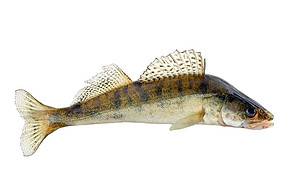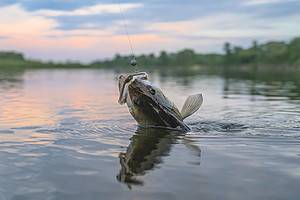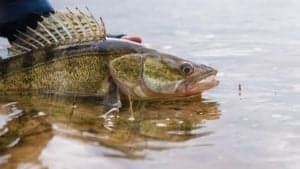In Vermont, the great outdoors are absolutely wonderful, but it’s easy to get too preoccupied to enjoy them. Why not take advantage of everything Vermont has to give if you live there or you’re visiting? You can experience the lovely natural world that surrounds the waterways of Vermont during a fishing trip! This is a fantastic way to unwind, calm, and feel rejuvenated.
Spending time with friends and family while fishing is another excellent approach to making lifelong memories. Today, let’s take a look at the two official state fish for Vermont. Don’t forget to read our Vermont fishing guide at the end for important information!
Official State Coldwater Fish: Brook Trout
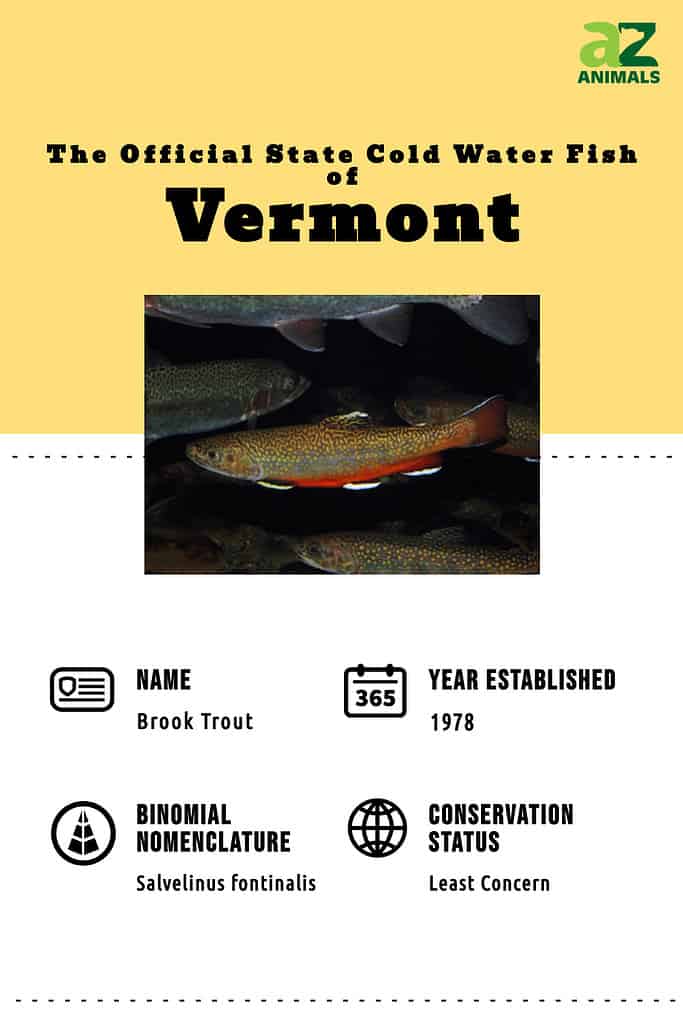
In 1978, Vermont made the brook trout (Salvelinus fontinalis) its official coldwater fish. 19 states recognize freshwater trout species as their official state fish. Their existence denotes clean, chilly running streams.
The brook trout, commonly known as the speckled trout, is a captivating fish with yellow spots on its back and an olive-colored belly. The markings on the trout’s back are mesmerizing and resemble worms in appearance.
The brook trout’s hue shifts from green to orange or red across its flanks, with sporadic red dots edged by light blue. Its bottom is creamy white, and the lower fins are reddish-orange with black and white streaks on each one. A brook trout typically grows to a length of nine to 10 inches.
Highly opportunistic in their eating habits, these fish frequently favor the adult and nymph stages of aquatic bugs. When accessible, they will additionally consume small fish, ants, and beetles. Autumn is when brook trout spawn and the eggs hatch in January.
Young brook trout are normally between three and four inches long by the end of their first season. Brook trout have a two to three-year lifespan on average. This type of fish lacks the teeth seen on the roof of the mouth found on other species of fish.
Northern water snakes, herons, kingfishers, otters, and snapping turtles are a few of the brook trout’s predators.
Where to Find Brook Trout in Vermont
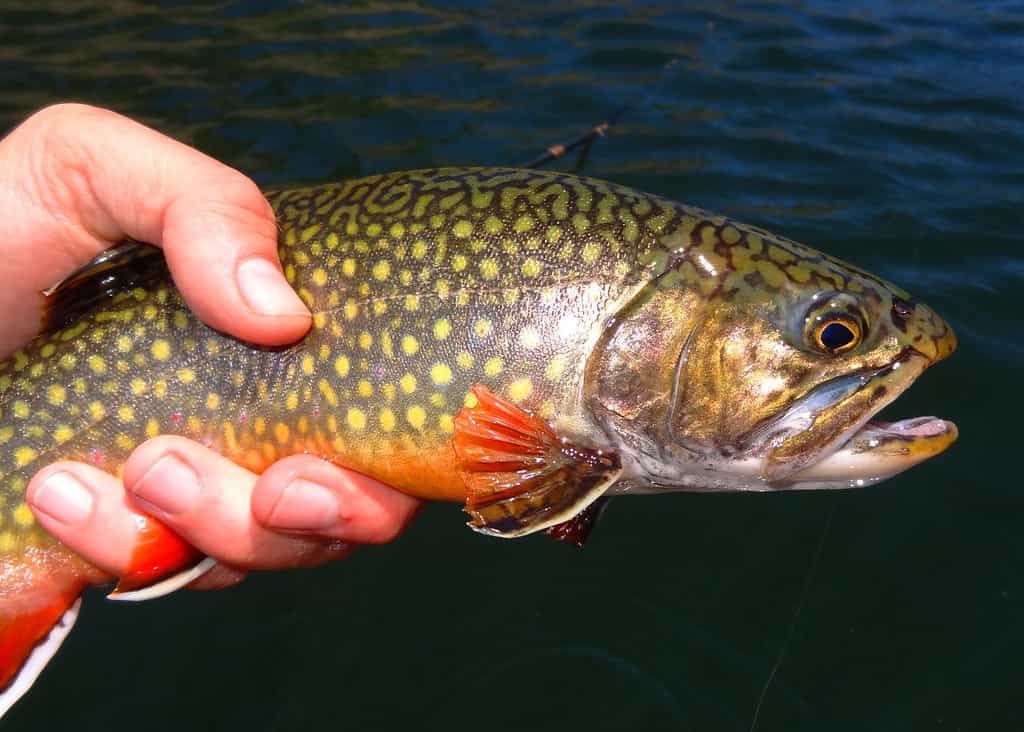
Brook trout prefer to live in extremely clean waters.
©Matt Jeppson/Shutterstock.com
Vermont is a trout-rich region. There is a lot of trout water and good fish. You can find trout in most streams and rivers, as well as small lakes, reservoirs, and more. Some of the larger trout-stocked lakes in Vermont include:
- Island Pond
- Lake Bomoseen
- Lake St. Catherine
- Lake Champlain
- Harriman Reservoir
- Lake Dunmore
- Seymour Lake
- Lake Memphremagog
- Lake Willoughby
- Maidstone Lake
- Somerset Reservoir
Wintertime trout ice fishing is available in many of these lakes. The largest brook trout ever caught in Vermont weighed in at just under six pounds and was found in Paran Creek!
Official State Warm Water Fish: Walleye

In 1978, the state of Vermont named the walleye (Sander vitreous) as its official warm water fish. A well-known and frequently stocked game fish, the walleye is a freshwater fish belonging to the perch family. Walleye are generally yellow and green in color, thin and long, and have a white belly.
They have at least five black bands across the back. You can spot a walleye from their two dorsal fins. There’s a soft-rayed and a spiny fin. The walleye has a large jaw, sharp teeth, and low-light vision, which all contribute to its capacity to find food in the dark.
Walleye can grow to a length of two to three feet and a weight of 10 to 20 pounds. The diet of this fish varies according to what is readily accessible, which often consists of big crustaceans, insects, and tiny fish, like yellow perch.
Most feeding takes place between nightfall and sunrise. At the beginning of spring or early summer, walleye spawn. In rivers or shallow waters where there is sufficient movement to wash away silt and aerate the eggs, they lay their eggs over gravel or pebbles.
Over 100,000 eggs, typically hatch in approximately two weeks, can be laid down by females. The typical lifespan of a walleye is ten years.
Where to Find Walleye in Vermont
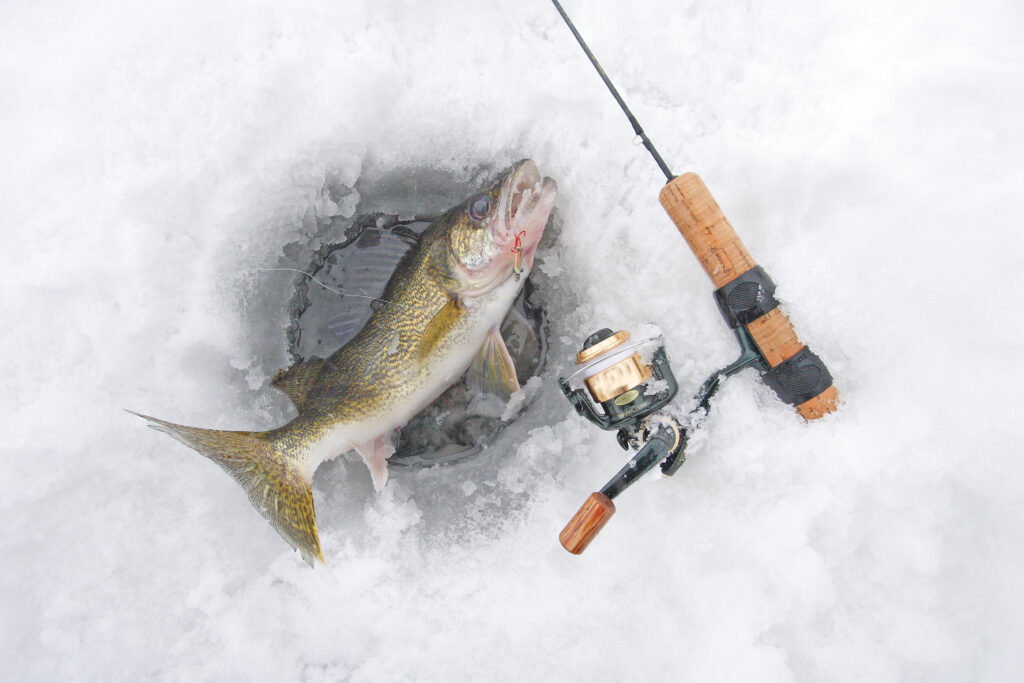
Walleye are often caught in the winter.
©iStock.com/stammphoto
Island Pond, Lake Carmi, Lake Champlain, and Lake Memphremagog all have thriving walleye populations. Under the right circumstances, walleye may also be present in the rivers that enter and exit these lakes.
Walleye samples are also present in other rivers in the state. Walleye favor lakes with dirt, rock, or silt bottoms that are somewhat deep. Although it has been shown to live in warmer impoundments, it is more commonly seen in lakes with cold water.
It is highly regarded for its delicious filets. The state record for the largest walleye caught falls just short of 15 pounds!
Vermont Fishing Guidelines

Waterbury Reservoir is a beautiful place to visit.
©John Couture/Shutterstock.com
Our fish stocks are protected by fishing regulations. Always verify the most recent Vermont fishing regulations that are specific to a given species and river. Your necessary license purchase contributes to the long-term protection and preservation of fishing.
Every angler who is 15 years of age or older must always have their fishing license on them when fishing. The majority of rivers and streams allow catch-and-release fishing with synthetic flies and lures throughout the entire year.
The photo featured at the top of this post is © iStock.com/Coast-to-Coast
Thank you for reading! Have some feedback for us? Contact the AZ Animals editorial team.




